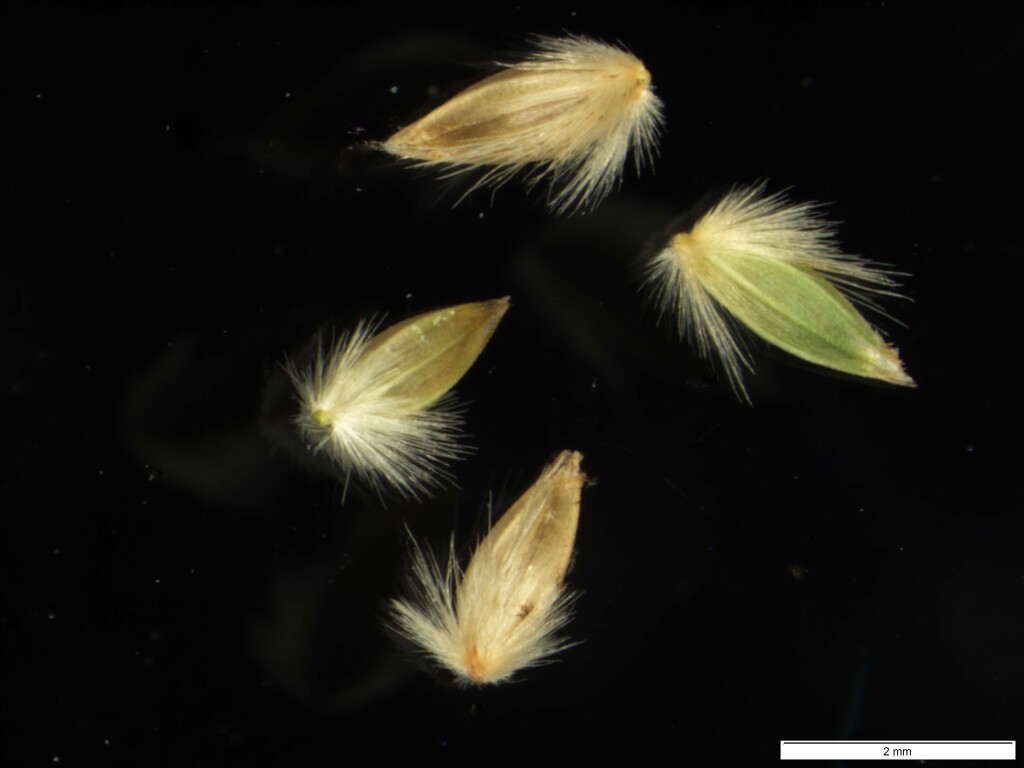Deyeuxia boormanii
(Vickery) N.G.WalshWeakly tufted perennial, culms decumbent to erect, to 130 cm high. Leaves slightly scabrous, strongly ribbed; blade flat, to 30 cm long and 6 mm wide; ligule obtuse, 1–5 mm long. Inflorescence a very loose panicle 20–35 cm long, with fine, spreading or deflexed branches. Spikelets 2.5–3 mm long, plump, green or slightly purplish; glumes acute, sub-equal, scabrous along the keel, bulging about the lemma; lemma subequal to glumes, ovoid, smooth, hardly thickened, but the 5 nerves prominently raised, awned from just below the apex, or occasionally unawned; awn when present to 0.3 mm long, not or barely exceeding lemma; callus hairs very dense, about half as long as lemma or slightly more; rachilla bristle c. 1 mm long, plumose with stiff hairs to c. 1.2 mm long. Flowers Jan.–Feb.
EGL, EGU, MonT, HFE. Also NSW. Known in Victoria only from a few recent collections from montane forests and swamps to the north and west of of the Errinundra Plateau (e.g. upper Delegate River at Bidwell, Gunmark Range, Mt Jersey area).
Formerly included in Deyeuxia parviseta (now restricted to Queensland and New South Wales) which differs from D. boormanii in the less prominently nerved lemma which is consistently longer than the distinctly unequal (rather than subequal) glumes and has sparser callus hairs. Older records of plants referred to D. parviseta in Victoria, occurring principally in damp alpine grassland and heathland, belong to D. innominata.
Walsh, N.G. (1994). Poaceae. In: Walsh, N.G.; Entwisle, T.J., Flora of Victoria Vol. 2, Ferns and Allied Plants, Conifers and Monocotyledons, pp. 356–627. Inkata Press, Melbourne.
 Spinning
Spinning
